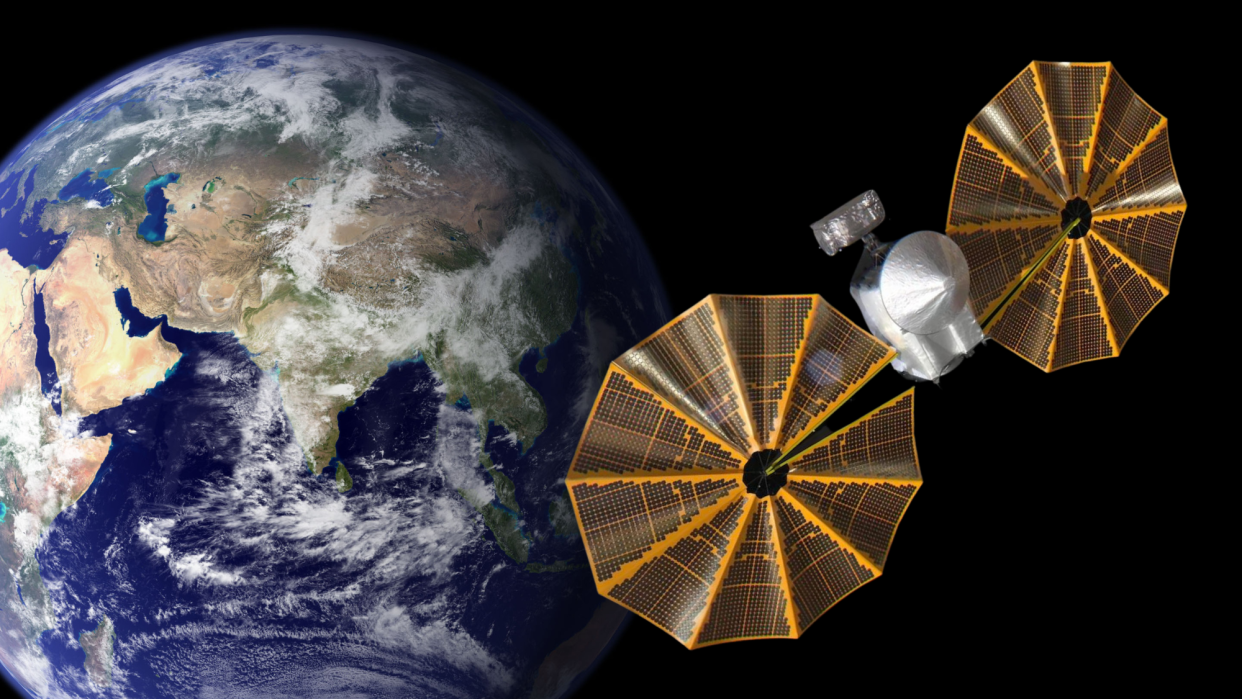The Lucy asteroid probe's solar array still isn't latched, but NASA's fine with it

The team behind NASA's Lucy asteroid mission is suspending efforts to get a troublesome solar array to fully deploy and latch.
Lucy launched in October 2021, beginning the first-ever visit to Jupiter's Trojan asteroids. These are thought to be primitive objects from the early days of the solar system that orbit ahead of and behind the giant planet as it makes its way around the sun. However, one of the spacecraft's two 24-feet-wide (7 meters) solar arrays did not fully unfold and latch as planned after Lucy reached space, and the team has been troubleshooting the issue throughout the mission.
The team resumed efforts to get the deployment motors of the circular array to close the thin slice of undeployed array and secure its latch last November, after Lucy made the first of three planned Earth flybys that will help fling the spacecraft out toward the orbit of Jupiter.
Related: NASA asteroid surveyor snaps stunning views of Earth and moon on way to Jupiter's Trojans
Now, mission officials have decided that working with the array as it is "carries an acceptable level of risk, and that further deployment activities are unlikely to be beneficial at this time," according to a NASA statement.
The team has determined that the solar array is over 98% deployed and will provide more than the energy required to help Lucy complete its 12-year-long baseline mission.
The most recent attempt to fully unfurl the array was made when Lucy was relatively warmer, being closer to and facing the sun. However the spacecraft is now 123 million miles (197 million kilometers) from the sun and moving away at 20,000 mph (35,000 kph), leading the team to consider that further deployment attempts would not be beneficial.
Related stories:
— The moon is enchanting in new photos from NASA's Lucy asteroid mission
— NASA's Lucy asteroid mission will explore mysteries of the early solar system
— NASA's asteroid explorer Lucy spotted disappearing moon during the lunar eclipse
Lucy is set for its second Earth gravity assist on Dec. 12, 2024, then will swing past its initial asteroid targets in the main belt and ahead of Jupiter. A final Earth flyby in 2030 will fling Lucy out toward two final space rocks among the Jupiter-trailing Trojans, found at sun-Jupiter Lagrange point 5.
The spacecraft used its first close approach to Earth to image the moon to test and calibrate the instruments it will use to study its ultimate Trojan targets.
Follow us on Twitter @Spacedotcom and on Facebook.

